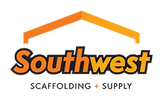Scaffolding Tags and Their Use
Scaffolding is one of the most critical parts of a construction job, and it is estimated that about 2.3 million people use scaffolding daily on the job site. It can also be one of our most dangerous tools if not used properly. One of the ways we can keep our employees safe is by using scaffolding tags. What are scaffolding tags, and how do they keep our workers safe?
When used consistently and correctly, scaffolding tags could reduce the nearly 5000 injuries that occur yearly. Tags are used to indicate the status of the scaffolding, and they are hung at crucial points on the structure, usually at the points of entry, and should be visible and readable. Tags come in three colors Red, yellow, and Green, and much like a stoplight, the color indicates how safe the scaffold is for use.
Green means "Go." The scaffold has been inspected and is safe for normal use. Yellow means "use caution." This tag means that the scaffolding has been modified for some reason. When there is a yellow tag, the scaffolding can be used, but the tag must be clearly marked with the modification, the possible hazard, and how to use the structure in its modified form. The yellow tag must be displayed until an inspection is made to determine that the scaffolding has returned to a safe state or is deemed unsafe, and a red tag is attached. The red tag means "Stop" it is a warning, meaning the scaffolding should not be used. The red tag is often used when the structure is erected, disassembled, or is being modified to a safe form. How are tags filled out?
No matter which color tag you are installing, It needs to contain the following information:
Job Name/ Number
The company the scaffold belongs to
The Competent Person responsible for inspection (signature required)
The yellow and red tags should be the reasons it is tagged as it is (i.e., erecting or dismantling)
When to apply tags Tags
Tags should be used from the beginning of the job until all the scaffolding is dismantled and removed from the job site. When the job begins, and you start assembling the structure, Your Competent Person should attach a RED tag indicating the structure is incomplete and unsafe. The tag is the warning that only those erecting the frames or repairing the problems are to be on the scaffold. From there, once erected and inspected, a green or yellow tag will replace the red tag. The YELLOW tag will be used if the scaffold has to be modified, such as when there is an angle where the structure has a gap that is not up to OSHA standards. Or when other modifications require extra caution when using the structure. If conditions on the scaffold cannot be repaired or when the scaffold is being disassembled, the red tag will replace the yellow. The GREEN tag will be applied and signed by your competent Person after the scaffolding has been erected, inspected, and deemed OSHA-compliant and safe for use. These tags are interchangeable as the scaffolding conditions change throughout the job. A Competent Person should inspect the scaffolding daily, and many companies check them three times a day. Before the scaffold is accessed in the morning, when returning from lunch break, and at the end of the day. There are no OSHA regulations for tagging, but the conditions can change quickly, and tags must be changed as needed.
Competent Person
Who is the competent Person? According to OSHA, this is someone aware of scaffolding rules and regulations. Someone who knows the ins and outs of scaffolding and its proper use should be your designated Competent Person. You might want more than one Competent Person on a job since someone trained in this capacity must always be onsite. I have my Foreman and My Labor Forman in my company, both trained in scaffolding safety. Either one can inspect and sign tags. Sometimes I will let them both inspect and tag the scaffolding on complicated job sites.
Scaffolding tags are often necessary when it comes to liability with other trades. Although I only let other trades use my scaffold by signing a liability form, they will often try to access it when we are away. The tags prevent them from blaming you if they access the scaffold when it is tagged appropriately. OSHA has no official rules about tagging scaffolding, but it is in your company's best interest to use them and use them properly. It keeps your crew safe and reduces liability for you. Southwest scaffolding has the scaffolding tags available on its website.
As always, stay safe!
Recent Posts
-
Scaffold Maintenance: Tips and Tricks for Safe and Efficient Operations
Maintaining scaffolding equipment is crucial for ensuring the safety and efficiency of any construct …Jul 22nd 2024 -
Innovative Uses for Scaffolding Beyond Construction
What do you think of when you hear the word scaffolding? When most people think of scaffolding, the …Jul 22nd 2024 -
Scaffolding Safety: The Role of the Competent Person
Southwest Scaffolding understands that scaffolding plays a significant role in construction. However …Jul 16th 2024




